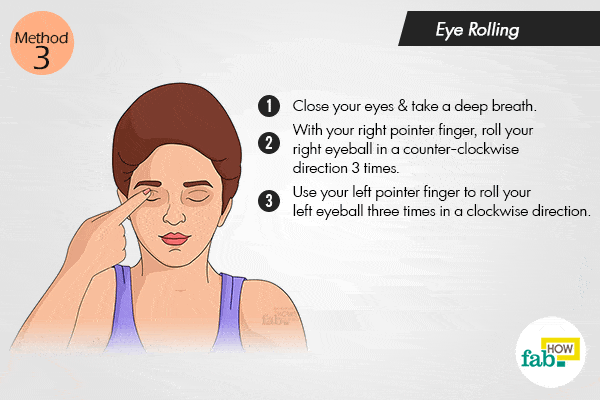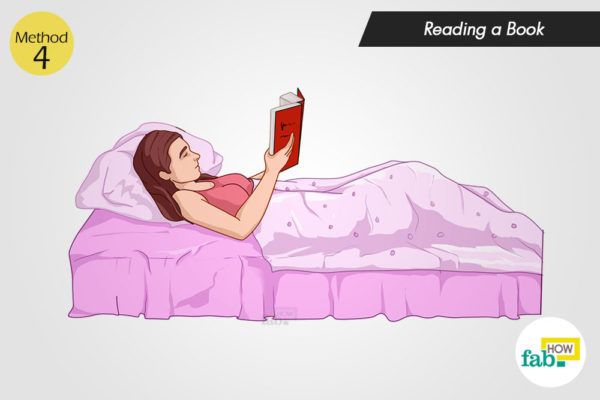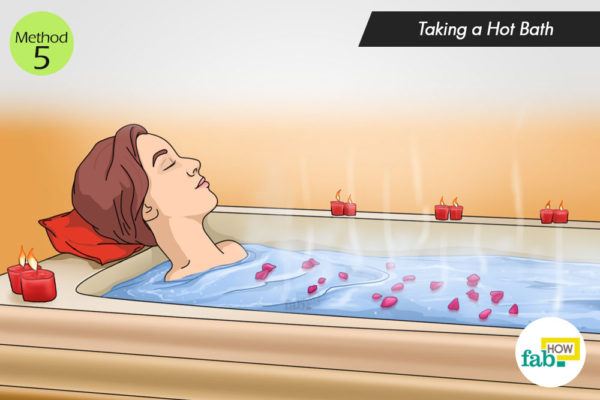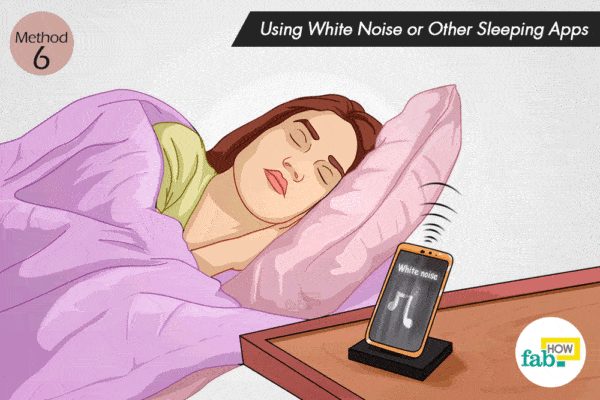Owing to contemporary lifestyles, sleep has become hard to come by for many. If your sleepless nights are wreaking havoc on your life, bringing your sleep schedule back on track must be on the front of your mind.
Sleeplessness may be due to any number of causes. While stress and anxiety are fairly common factors behind one’s inability to catch a snooze, today’s lifestyle has introduced a multitude of catalysts that play key roles in making it harder to fall asleep.
A night or two without sleep doesn’t amount to insomnia. But sometimes, a couple of sleepless nights may give rise to sleep performance anxiety, which may culminate in full-tilt insomnia. This usually happens with people who have dealt with sleeplessness or insomnia before.
One sleepless night is enough to give rise to exhaustion, fatigue and a headache the following day. But regular sleep deprivation poses huge health risks. Over time, it may impair your cognitive abilities and affect your emotional state. It also brings your body’s defenses down and increases the risk of diabetes, a stroke, and heart disease.
Sleep rehabilitation is seldom achieved through a single task. You need to follow different routes to bring slight modifications, if not drastic changes, into your lifestyle in order to reestablish your sleep pattern.
Six methods are described below, which take different approaches to address and tackle the underlying causes of your sleeplessness. These will help you fall asleep in 60 seconds.
Contents
Method 1: Using the 4-7-8 Breathing Exercise
Owing to the ever-increasing insomniac population, this is currently one of the most popular ways to slip into dreamland in less than a minute. This exercise was developed by Dr. Andrew Weil and has been growing in popularity ever since it hit the Internet. The process is extremely simple:
- Exhale completely through your mouth.
- Close your mouth and inhale through your nose, counting to 4.
- Hold your breath as you count to 7.
- Exhale completely through your mouth, breathing out for a full count to 8.
Repeat the above steps until you fall asleep. Honestly, you won’t even know when you fell asleep. The next thing you know, you’ll be waking up in the morning, fully relaxed and ready for the day ahead. This trick even seems to work for stressed-out people.
There is a little science behind the success of this easy exercise. The breathing pattern very efficiently slows the rapid heart rate as well as increases the oxygen supply in the blood, allowing your body to slip into a more relaxed and sleep-oriented state.
Method 2: Using Yoga
A. The Cat and Cow Pose (Marjaryasana and Bitilasana)
While two different poses, the Cat and the Cow poses are complementary and often used together to relax the body and mind. These poses are beneficial in de-stressing the body and calming the mind, thus helpful for people whose sleeplessness results from a hectic and taxing lifestyle.
Preparatory Tabletop Pose:
Your hands and knees should be on the floor, with your wrists directly below your shoulders and your knees directly below your hips. Your spine should be parallel to the floor, and you should face the floor.
Your palms and fingertips should touch the floor. Your knees should not be close together but have a little space between them.
The Cat Pose:
Exhale through your nose while arching your back up toward the ceiling. Tuck your chin gently toward your chest. Follow up with the Cow pose on the inhale.
The Cow Pose:
Inhale deeply, arching your back toward the floor. Lift your head and tailbone toward the ceiling and gaze upwards. Let your belly sink toward the floor.
Repeat this cycle 2 to 5 times initially, depending on your body’s capacity. You may increase this gradually up to 20 cycles as your body becomes resilient.
B. Standing Forward Bend (Uttanasana)
The Standing Forward Bend increases the blood flow in the brain and helps calm it. It relieves stress, anxiety, and fatigue, thus being a very good pose for those suffering from insomnia.
Stand with your spine erect, and your posture relaxed. There should be about 6 inches of space between your feet. Exhaling slowly, fold your body and touch the ground with your palms. Let the top of your head hang toward the floor.
Hold the position as long as you can without straining (not longer than 3 minutes initially), then lengthen your body back up slowly and steadily while inhaling deeply.
Key points:
Bend at your hips, not your lower back.
Your knees should be straight, but not locked. If you’re unable to keep your knees straight, bend your knees a little while bringing your belly toward your thighs.
Unless you’re a gymnast, don’t be fooled for even a moment that you’ll be able to do this pose fully in one try. It takes years to master this pose in its entirety. Extend yourself only within your physical limits to avoid any injury.
C. Seated Forward Bend (Paschimottanasana)
Those who have problems balancing while doing the Standing Forward Bend may try the Seated Forward Bend. This pose will also calm your mind and relieve your body and mind from anxiety, stress, and fatigue – the major factors that cause sleeplessness.
Sit on a comfortable mat with your spine erect. Keep your legs together and extended in front of your torso. Inhaling, lift your arms straight up and fold them over the top of your head. Slowly bend your entire torso on the exhale and fold it along your legs. Gently reach forward with your arms to hold the soles of your feet. Hold the position as long as you can comfortably (not longer than 3 minutes initially). Inhale as you slowly unfold your torso.
Key points:
Hinge the forward bend on your hips, not your lower back.
Extend yourself within your physical limits to avoid any injury. Steadily increase the limits as your body develops endurance and elasticity.
Method 3: Using Meditation
Meditation is a good way to relax and de-stress your mind. A calm and peaceful mind is better prepared to embrace sleep. If anxiety and mental fatigue are keeping your sleep at bay, then meditation might be your cure. Logically, a distressed mind will have difficulty concentrating and subsequently meditating. Pranayama can help the mind center and focus. You’ll find that you’re able to get along with your meditation practice with considerable ease.
A. Alternate Nostril Breathing (Nadi Shodhan Pranayama)
Alternate Nostril Breathing helps calm the mind and body and helps it to relax. Nadi Shodhan means “clearing the circulation.” This will help you to calm your nerves and settle your mind. The stress that arises from the pressing matters of day-to-day life will gradually subside, making your body and mind light and ready to embrace slumber. You’ll finally start sleeping like a baby and waking up in a bright frame of mind.
Before you start, seat yourself comfortably. Your posture should be straight and your spine erect.
- Place your left palm on your knee and rest the pointer finger and the middle finger of your right palm on your forehead, between your eyebrows.
- Inhale and exhale deeply through your nose.
- Closing the right nostril with your thumb, gently inhale through your left nostril.
- Close the left nostril with your ring finger and retain the breath for a brief pause.
- Open your right nostril and steadily exhale through it.
- Slowly and steadily inhale through your right nostril.
- Close the right nostril with your thumb. Ensure that both the nostrils are closed with your thumb and ring finger. Retain the breath for a brief pause.
- Open the left nostril and gently exhale through it.
Try to follow the inhaling and exhaling of the breath with your mind. Repeat the cycle 1 or 2 times initially. You may gradually move on to 5 to 10 cycles over a period of time as your body, especially your lungs, become adept.
B. Eye Rolling
This one is extremely simple, and you can do it sitting in your bed after you’ve turned the lights off. This eyeball-rolling technique mimics the natural technique of falling asleep and helps release melatonin, the sleep hormone.
Close your eyes and take a deep breath. With your right pointer finger, roll your right eyeball in a counter-clockwise direction three times. Then, use your left pointer finger to roll your left eyeball three times in a clockwise direction.
Method 4: Reading a Book
Remember when you used to fall asleep trying to finish a book in grade school or high school? It used to be such a pain back then, and you probably got into trouble for staying up late. On the upside, you can use that to your advantage now. The best part, it’s not just bland and boring books that will have you nodding off. You can read an interesting book and still go to sleep, given that it is still calming and gentle.
Prepare for bedtime by turning off the lights and electronics and snuggling under your comforter. By the light of your bedside lamp, read a book of your choice while lying back on your pillow. You’ll be drowsy within a few minutes.
Reading involves concentration as well as a coordinated effort of your eyes and brain. This tires out your eyes, which is followed by a lot of blinking and sleeping.
Method 5: Taking a Hot Bath
Taking a relaxing hot bath is another way to relax your body to prepare it for bedtime. But, this is not the only reason it works. While the normal body temperature is 98.6° F, it rises and falls by a few degrees throughout the day. The rise in temperature tends to make you energetic, while the fall leads to lethargy. Your body temperature falls when you’re in a deep sleep.
Besides relaxing your body, a hot bath leads to a significant drop in body temperature further preparing you to sleep.
So, take a hot bath 30 minutes before bedtime. Light a few scented candles for a little aromatherapy. The hot water will also do away with any joint pains and body aches, relaxing you completely.
However, do take care not to fall asleep in the tub. If you’re afraid of falling asleep in the tub, a hot shower can also be helpful in a similar way.
Method 6: Using White Noise or Other Sleeping Apps
If it’s the technology that’s keeping you awake, it’s time to use it for something other than Candy Crush. There are a lot of white noise apps out there that you can choose from.
Scientifically, you can easily sleep through noise. If you’ve ever been woken up by some noise, it was more likely because of the change in the pattern of the natural noise rather than the noise itself. You may have heard of people who can’t sleep without the noise of their fan (which is also a type of white noise). That’s because your hearing works even while you sleep. White noise has been found to be effective in helping people sleep.
Other sleeping apps may guide you into sleep step-by-step or even help you meditate to sleep. If natural sounds do it for you, there are also many app choices for that. If you’re not much of a reading person, try an audiobook. It takes the concept of white noise and takes it one step ahead.
Tips to fall asleep easily
- Stress may be the root cause of your insomnia. Try to manage and resolve stress-inducing situations in order to reduce stress. In the meantime, try to dissociate stress from your mind at bedtime.
- Insomnia often is a symptom of other physical or psychological conditions. While thyroid, asthma or allergies are some of the physical conditions, anxiety, depression, and trauma may be the psychological conditions. Visit your doctor for a complete diagnosis.
- Significantly limit your caffeine intake, whether it is from coffee, tea or soda. Avoid consuming caffeine past noon to help your brain and body relax in time for your sleeping time.
- Limit your alcohol consumption to 1 serving a day or avoid it entirely to help your body ease to get into the sleep mode at bedtime.
- Devise a sleep schedule, in tune with your lifestyle that can be easily followed and stick to it.
- To help you sleep better, take a little aromatherapy to bed with you. Dab a little lavender essential oil or any other essential oil of your choice on your pulse points – the inside of your wrist or elbows, neck, temples or forehead.
- Force yourself to stay awake. It may appear counterintuitive, but applying reverse psychology to your sleepless mind actually produces results. It becomes especially helpful if you’re experiencing sleep performance anxiety.
- Sleeping position is also important when you’re unable to sleep. Your body is unable to relax when you sleep in weirdly twisted and awkward positions. Position yourself so that your head is level and your spine is straight. Try lying down in Shavasana or the Corpse Pose to fully relax your body.
- Say adios to electronics and multimedia like your TV, computer, laptop or tablet at least 30 minutes before bedtime.
- Associate bedtime and your bedroom entirely with slumber. Remove the TV and electronics from your bedroom. If that’s not possible, cover the screens and mirrors along with any source of blinking digital light (like your digital clock) with linen.
- If, for any number of reasons, you cannot cover the blinking lights entirely, try using a sleeping mask to block out the lights. Melatonin, a hormone produced in darkness, helps you sleep. So, darkness is a bare necessity if you have trouble sleeping.
- To give your sleeping efforts a boost, you may also follow a melatonin-rich diet including pineapples, bananas, oranges, oats, rice, and tomatoes. In dire situations, you may also resort to over-the-counter melatonin supplements.
- Lack of exercise can also lead to sleepless nights. You should exercise at least 3 to 5 times a week.
- While a 30-minute siesta may be refreshing, afternoon naps, especially long naps, should be avoided if you’ve been spending your nights awake. Trying to catch up on lost sleep during the daytime often slims your chances of slumber at night.
- While no one is suggesting that you listen to heavy metal before bedtime, listening to light and soothing music 5 to 10 minutes before bed can calm your nerves and relax your body. If you spend your entire day running on high energy, this could be an easy way to wind down.













I would like to sign up for newsletter.
Thanks,
JER
Love your site ,
I am interested in this simple and practical site. Keep it up!
An interesting site indeed!
Very interesting and educational site. Love it. I need this kind of site.
Really good site…has a lot of information to learn